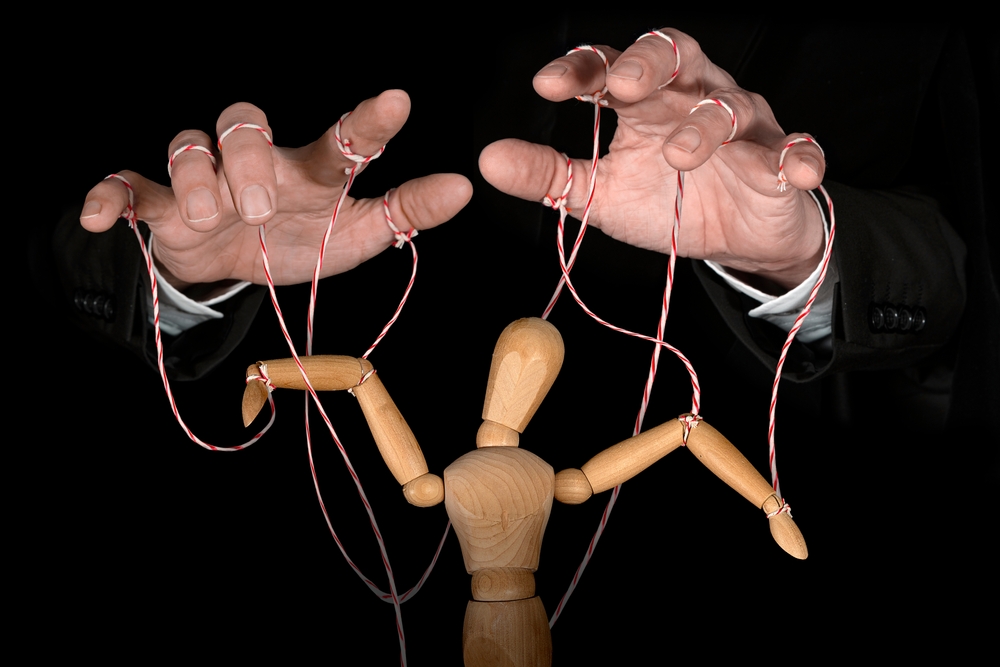Marketing is mind control, and you’re already under the spell
You think you make choices.
You think you pick your coffee. Your laptop. Your shoes.
You think you scroll, browse, click, and buy of your own free will.
You don’t. Marketing did. Not the buy now, act fast, final sale pushy kind. The real kind. The kind you don’t see coming. The kind that whispers instead of shouts.
It’s already in your head. That’s the narrative working as planned.
Control, but make it cinematic
Mind control sounds villainous, doesn’t it? Feels a little too Orwellian. Too Darth Vader gripping someone’s throat from across the room.
But that’s not how it works.
Marketing, when done well, doesn’t feel like coercion. It feels like desire, like falling in love.
You think you wanted it.
You think it was your idea.
You walk into a boutique and pick the one pair of sunglasses that make you feel like a rockstar. Without realizing they were positioned just right under perfect lighting, with just enough social proof (five-star reviews whispering in your ear) to make the choice inevitable.
You subscribe to an email list because the subject line felt like a message from an old friend. Without realizing it was structured to mimic the exact dopamine pattern of a cliffhanger in your favorite book.
You tell yourself, I’m not into brand names, but your phone, your sneakers, your coffee cup all belong to brands that didn’t ask for your attention. They embedded themselves into your identity.
This isn’t manipulation. This is narrative engineering. And if you’re in business, you better learn to wield it.
The power of shared myths
Humans don’t buy products. They buy stories.
Not sneakers. Rebellion, perseverance, the thrill of the chase.
Not coffee. Community, ritual, the promise of waking up to something better.
Not a laptop. Creativity, innovation, a reflection of their personal brand.
Every brand that commands obsession is built on a shared myth, a belief system reinforced over time:
The Apple Myth. Not computers. Rebellion. Individualism. Genius.
The Nike Myth. Not shoes. Endurance. Heroism. The underdog’s triumph.
The Ducati Myth. Not motorcycles. Speed. Danger. Adrenaline as a lifestyle.
Brands that get this right don’t sell products. They sell identities.
And customers don’t just buy. They become. They convert others.
The cult blueprint. How brands engineer devotion
So, how do you do it? How do you make your brand unignorable? How do you turn customers into followers? And followers into diehards?

1. Sacred symbols & rituals
Humans create icons. Objects, colors, insignias that mark belonging.
A simple logo? No. A sigil. A banner for the tribe.
Why do people proudly wear the swoosh?
Why does a read-soled stiletto scream luxury?
Why does the sound of a Harley vibrate in the chest before the bike is even seen?
2. Indoctrination through language
Apple doesn’t sell computers. Ducati doesn’t sell motorcycles. LEGO doesn’t sell toys. They sell movements. They use words that mean more than words.
LEGO’s slogan? Rebuild the World.
It’s not about plastic bricks. It’s about possibility.
3. The Gatekeeper Effect
Not everyone should be invited. The moment something becomes too accessible, it loses mystique.
That’s why luxury brands have waiting lists.
That’s why secret memberships increase desire.
That’s why “Apply to join” feels more powerful than “Sign up now”.
4. Manufactured identity
Give your audience a label, a role, a mission.
Not Nike fan, but athlete.
Not Harley-Davidson customer, but rebel.
Not LEGO buyer, but creator, builder, visionary.
People don’t want to own things. They want to become things.
5. Rituals over transactions
Starbucks isn’t about coffee.
It’s about the experience of getting it. The morning routine. The name of the cup. The familiarity of the menu.
Your brand should have a signature experience that goes beyond the product. A ritual. A moment that feels sacred.
The ethical panic button (but not really)
Is this… unethical?
You tell me. Every decision you’ve ever made has been influenced by a story.
Your belief system?
Your career choices?
Your friendships?
It’s all persuasion.
It’s all narrative.
It’s all branding.
Politicians do it. Cities do it. Movements do it.
You should do it, because if you don’t, someone else will.
The real question isn’t whether to use mind control. It’s whether to use it well.
Now, watch it work
Still here? Still reading? Still hooked?
That wasn’t an accident.
That was marketing. That was narrative engineering. That was influence, finely tuned.
And you liked it, which means it worked.
Now, go use it.
It’s your turn
How will you use mind control in your marketing? How will you make your audience feel like they chose it, even though you led them there?
Drop your thoughts below. Or don’t.
Either way, the idea is already in your head.
And that’s the whole point.







